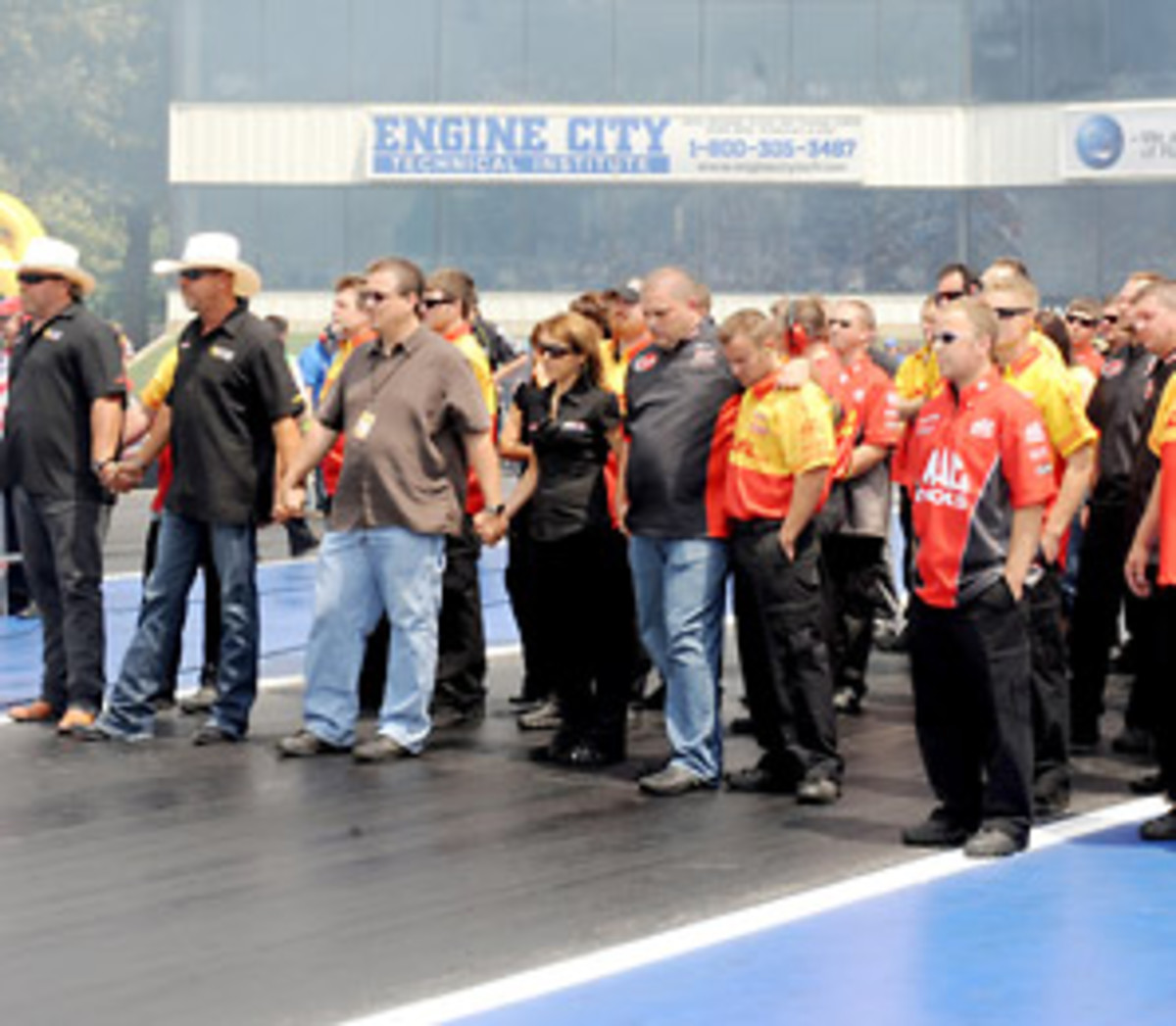Dark cloud of mortality a storm all drivers struggle to outrace
Paul Dana's peers were coping with that reality. Again.
Dana died in an accident during a warmup before the 2006 season-opener at Homestead-Miami Speedway. The tragedy was another reminder that not every driver leaves an accident "with only a scratch."
Tony Renna perished during a tire test in 2003 at Indianapolis Motor Speedway in his first day on the job with Ganassi Racing. Eric Medlen was testing his Funny Car at Gainesville Raceway in March 2007 when he hit a guard wall and later died. Dale Earnhardt Sr. was killed on the last lap of the '01 Daytona 500.
And on Thursday, Scott Kalitta's peers will feel those same feelings when they gather for a remembrance of the 46-year-old's life at Ernsthausen Performing Arts Center in Norwalk, Ohio. They will console his wife and sons, they will remember, laugh and cry, and ultimately will wonder why. And how. And if it will happen to them.
Kalitta was killed on June 21 during qualifying in Englishtown, N.J., when his Funny Car burst into flames and hit a wall in excess of 300 mph.
"My attitude is positive as long as I'm not alone," four-time champion NHRA champion Gary Scelzi said. "I drove from Cleveland to Columbus, Ohio, and spent a couple of days with my good friend (Funny Car driver) Jim Head. You have a lot of time to reflect when you're by yourself, and sometimes alone time isn't a good thing."
It's a feeling the dozen or more IndyCar drivers attending Dana's memorial two years ago undoubtedly felt as they filed into the back of the Mahaffey Theater in St. Petersburg, Fla., as if the distance between themselves and the emotional tributes beginning on-stage would insulate them the thoughts, the emotions and their own sense of mortality and fallibility.
There is no blaze of glory, just reconciliation and debate. Policemen, firemen, soldiers go to work each day with the realization they might not come home. They go for the greater good. Drivers go for entertainment. But they go anyway. No one wants to die, no matter how many times the tired "they died doing what they loved" bromide is trotted out to salve those left behind. And there is guilt for going.
"You're at risk driving here today," Danica Patrick, Dana's former teammate at Rahal Letterman Racing, said after the accident. "You're at risk driving home. You're at risk being in your own house. There is cancer with every breath you take. There is a chance for tragedy every second. The part I'm scared about is that I put my family through this, too. This hasn't changed my mind, at all. I'm still going to do it. To just put them through that or to ever have them deal with that, I would feel bad. My husband said it best. He told me that 'Just because you're a race car driver doesn't mean you're supposed to die.' I think that's the truth of it."
It's up to an encompassing sense of self-reliance to assure the panicking head inside a helmet that it will not be them next time.
It can't. We're different.
Unrealistic as those thoughts are, they are what keeps drivers getting in their cars.
Kalitta's memorial will be held in Norwalk because it's the site of the ensuing NHRA event, and the show, like it always does no matter the loss or the hurt, goes on. The remainder of Kalitta's team, including his first cousin, Doug Kalitta, will compete.
"We're a race team, and that's what we do," said Jim Oberhofer, Kalitta Motorsports' general manager. "Scott was a drag racer to the core, and he would want us to compete in Norwalk , so we're going to go racing this weekend. ... It's the right thing to do."
Drivers learn young how to begin assessing and addressing danger, the balance of calculation and consequence. A botched play in a football game could cost a season. A botched passing attempt or shift could cost a life. Aggression must be channeled into creative pressure, and suppressing doubt is tantamount when one chance at victory might present itself in 200 laps of racing.
"Confidence comes from the fact you have a sense of control over what you're doing," Formula One driver Sebastien Bourdais told the St. Petersburg Times in '06. "You feel an interaction between the car and yourself, like you're making things happen and it's not the other way around where the car goes where it wants to sometimes you lose that sense of control, and then most of the time you crash."
Picking up and moving on is the natural defense for drivers when the ultimate wrong occurs. Part of that lies in the cranial wiring, the same inner mechanism that enables them able not only to handle but crave potentially lethal situations. And part comes from finding the answers they need either in ego, faith or denial. Whatever works.
"There is one thing I know," said Helio Castroneves, who replaced the deceased Greg Moore at Penske Racing before the '00 season. "Destiny is something. If it is meant to be, it will be."





